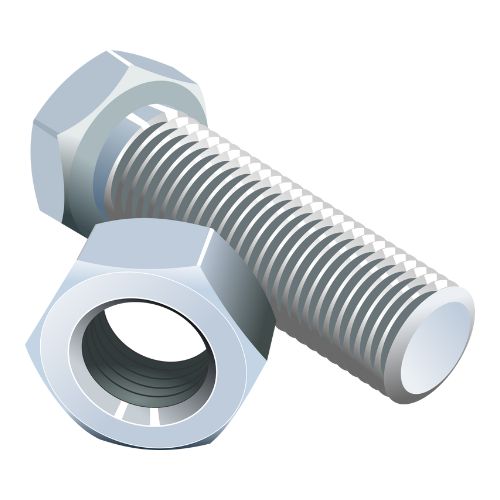How to Fix a Wobbly Wheelchair Wheel
A wobbly wheel on a wheelchair can be frustrating, and it can make it difficult to get around. It’s a common problem, but the good news is that it’s often relatively easy to fix. Most often people say goodbye to a wheelchair the moment it begins to malfunction. I want to encourage you to fix it at home, so you can save some money.
In this article, we’ll go through the steps you need to take to fix a wobbly wheelchair wheel.
Step 1: Identify the source of the problem
The first step is to identify the source of the problem. There are several things that can cause a wheel to wobble, such as a bent axle, a loose wheel, or a worn-out bearing. Once you’ve identified the source of the problem, you’ll be better equipped to make the necessary repairs.
Step 2: Tighten the bolts

One of the most common causes of a wobbly wheel is loose bolts. If the bolts that hold the wheel in place are loose, you’ll need to tighten them. You’ll need a wrench or pliers to do this. Simply tighten the bolts until they’re snug, but don’t over-tighten them, as this can cause other problems.
Step 3: Check the bearings
If the bolts are tight, the next step is to check the bearings. Bearings are what allow the wheel to rotate smoothly. If they’re worn or damaged, they’ll cause the wheel to wobble. To check the bearings, spin the wheel and listen for any noise. If you hear any noise, or if the wheel feels rough when you spin it, you’ll need to replace the bearings.
Step 4: Replace the bearings

Replacing the bearings is relatively straightforward. You’ll need to remove the wheel from the wheelchair and then remove the bearings from the wheel. You can usually do this by removing the axle nut and then pulling the axle out of the wheel. Replace the old bearings with new ones and then reassemble the wheel.
Step 5: Replace the axle
If the bearings are fine, but the wheel is still wobbling, the problem may be with the axle. If the axle is bent, it can cause the wheel to wobble. To replace the axle, you’ll need to remove the wheel from the wheelchair and then remove the axle from the wheel. Replace the old axle with a new one, and then reassemble the wheel.
Step 6: Replace the wheel
If the axle is fine, but the wheel is still wobbling, it’s likely that the wheel itself is damaged. If the wheel is damaged, you’ll need to replace it. You’ll need to remove the wheel from the wheelchair, and then replace it with a new one.
Fixing a wobbly wheelchair wheel is relatively straightforward, and it’s usually a simple matter of tightening bolts, checking bearings, replacing bearings, or replacing the axle or the wheel itself. With some ingenuity, you will be able to do it yourself without needing help from a professional. Remember, not to panic when you get stuck. You can always look for solutions online.
How to fix the wheelchair’s front wheel wobble?
To fix a wobbling front wheel in a wheelchair, follow these steps:
1. Check the axle: Start by checking the axle of the wheel, which is the rod that runs through the center of the wheel. If the axle is bent or damaged, you’ll need to replace it.
2. Tighten the bolts: Check all the bolts that hold the wheel onto the axle. If they’re loose, tighten them with a wrench or pliers.
3. Check the bearings: If the bolts are tight, the problem may be with the bearings inside the wheel. If the bearings are worn or damaged, they’ll need to be replaced.
4. Check the tire: The wobbling may be due to a flat or worn tire. Check the tire for damage and make sure it’s fully inflated. If the tire is damaged, you’ll need to replace it.
5. Check the fork: The fork is part of the wheelchair that holds the wheel and connects it to the frame. If the fork is damaged or bent, it will cause the wheel to wobble.
6. Rebalance the wheel: If all the above steps have been completed and the wheel is still wobbling, you may need to have the wheel rebalanced. This involves spinning the wheel and adjusting its weight so that it runs smoothly.
If you’re not confident in your ability to fix the wobbling wheel, it’s best to consult with a professional mechanic or repair specialist. They’ll be able to diagnose the issue and make the necessary repairs to ensure that your wheelchair is safe to use.
Can I perform a wheelchair front wheel replacement at home? How?
Yes, you can perform a front wheel replacement on a wheelchair at home, but it’s important to make sure that you have the right tools and parts. Here are the steps to follow:
1. Gather tools: You’ll need a wrench or pliers to remove the bolts, a screwdriver to remove the axle, and a new wheel, axle, and bearings if needed.
2. Remove the old wheel: Use the wrench or pliers to remove the bolts that hold the wheel to the fork. Then remove the axle from the wheel by unscrewing it.
3. Install the new wheel: Insert the new axle into the new wheel, making sure that the bearings are securely in place. Then bolt the wheel to the fork, tightening the bolts securely.
4. Test the wheel: Spin the wheel to make sure it’s rotating smoothly and isn’t wobbling. If it is wobbling, you may need to readjust the bolts or bearings.
If you’re not confident in your ability to replace the wheel, it’s best to consult with a professional mechanic or repair specialist. They’ll be able to diagnose the issue and make the necessary repairs to ensure that your wheelchair is safe to use.
Note: Make sure to follow the manufacturer’s instructions for your specific model of the wheelchair when replacing the wheel, as the process may vary slightly.
How can I tell if the bearings are worn?
There are a few signs that indicate that your wheelchair bearings are worn and in need of replacement:
1. Wobbling: If you notice that the wheel is wobbling or feels loose, it’s likely that the bearings are worn and need to be replaced.
2. Noisy: Worn bearings can produce a grinding or squeaking sound when the wheel is spinning. This is a sign that they need to be replaced.
3. Reduced smoothness: If you notice that the wheel feels less smooth when spinning, this can also be a sign of worn bearings. The wheel should spin smoothly without any roughness or unevenness.
4. Visible damage: You may also be able to see visible signs of damage to the bearings, such as rust or damage to the metal casing.
If you suspect that your bearings are worn, it’s important to replace them as soon as possible to ensure the safety and functionality of your wheelchair. Consult with a professional mechanic or repair specialist if you’re not confident in your ability to diagnose the issue or perform the replacement yourself.
When is the right time to say goodbye to a wheelchair?
The right time to say goodbye to a wheelchair can depend on a variety of factors. Some common reasons to replace a wheelchair include:
1. Safety: If your wheelchair is damaged or has become worn over time, it may pose a safety risk. If you notice any cracks, fraying, or other signs of wear, it may be time to replace your wheelchair.
2. Comfort: If your wheelchair no longer provides you with the comfort you need, it may be time to consider a replacement. This could be due to a change in your needs or physical condition, or simply because your wheelchair has become worn or outdated.
3. Mobility: If you’re finding it increasingly difficult to maneuver your wheelchair or use it for daily activities, it may be time to consider a replacement. A new wheelchair may offer improved functionality and better meet your needs.
4. Insurance coverage: Some insurance plans have time limits on coverage for medical equipment, including wheelchairs. If your insurance coverage has expired, it may be time to consider a replacement.
Ultimately, the right time to replace a wheelchair will depend on your individual circumstances and needs. If you’re unsure about whether it’s time to replace your wheelchair, it may be helpful to consult with a healthcare provider or rehabilitation specialist for guidance.
Quick-release wheelchair wheel stuck? What to do now?
If your quick-release wheelchair wheel is stuck, there are a few steps you can take to try to fix it:
1. Check the mechanism: Make sure that the mechanism that holds the wheel in place is not obstructed or damaged. Clean any debris or dirt from the mechanism and ensure that it is properly aligned.
2. Apply lubrication: If the mechanism is not obstructed, try applying a light lubricant, such as silicone spray, to the area where the wheel attaches to the frame.
3. Use a tool: If the mechanism still won’t release, try using a small tool, such as a screwdriver or pliers, to gently pry the mechanism open. Be careful not to apply too much force, as this could cause damage to the mechanism or frame.
4. Get professional help: If you are unable to fix the quick-release mechanism on your own, it’s best to seek the help of a professional. A repair technician or mobility equipment specialist can diagnose the issue and make any necessary repairs.
Remember, it’s important to always use caution when working on your wheelchair, especially if you’re not familiar with the mechanism or are unsure about what you’re doing. If you’re concerned about the safety of your wheelchair, it’s always best to seek professional help.
Conclusion
Fixing a wobbly wheelchair wheel can be a quick and easy task if you know what you’re doing. By checking the mechanism, applying lubrication, using a tool, or seeking professional help, you can ensure that your wheelchair runs smoothly and safely. Don’t let a wobbly wheel get in the way of your independence and mobility, take control and get it fixed!

